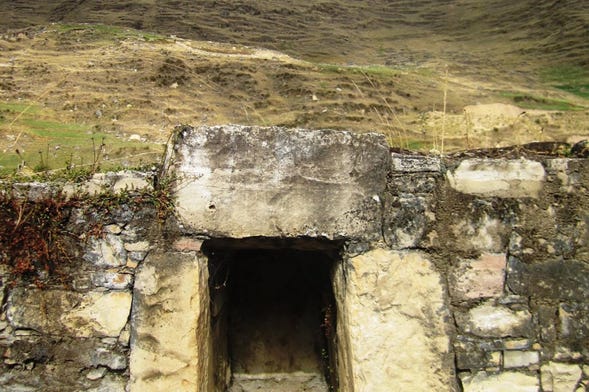Disfrute de los milagros de la región central Perú con esta excursión a Yanahuanca, Huarautambo y Astobamba. Descubrirá sus famosos complejos arqueológicos y se relajará en los baños termales de Villa.
Precio
El precio de esta actividad es de 68,40 €.
*Precio puede variar según disponibilidad y fecha.
Idioma del Guía y Tiempo de la Actividad
Español
Excursión a yanahuanca huarautambo astobamba y villo
Huarautambo archaeological site
Event was promoted by students of the Specialty of Administration of the UNDAC with the support of the DIRCETUR of the regional government of PascoStudents and parents of the National University Daniel A. Carrion de Pasco participated in the tour called The Wonderful Tour to Chuapihuaranga Montain, reported Rodolfo Rojas Villanueva, regional director of the Dircetur Pasco.
The community of Cuchis presented the Charicamay dance; Professor Pío Mendoza explained how in the place called Casharagra, peasants from the community of Cuchis killed the bloodthirsty Chilean captain Belisario Troncoso, as he passed through the place.
Huarautambo inca bridge
All our tour operators in each destination have established biosecurity protocols and flexible rescheduling and cancellation policies. When can we travel again? Check out our recommendationsTourism in Yanahuanca Location in Yanahuanca
Another interesting site that the city of Yanahuanca has to offer its visitors is the Archaeological Complex of Huarautambo and Astobamba. The first area of the complex or Huarautambo was a place of rest, hence its quality of Tambo. That one is located in the course of an Inca road that allows the union of Jauja and Huánuco Pampa and presents Inca structures that make think that besides a place for the rest it was a place destined to the storage of products that could be used by the same travelers of the Tahuantinsuyo. The other place, known as Astobamba, although it also had an Inca settlement, seems to have been built at an earlier time, possibly by the ancient population of the Wari, and would have served as a place of punishment.
Huarautambo inca bridge yanahuanca_pasco
There are two pavilions built with noble material and a swimming pool, a pavilion for changing rooms for the users of the pool and another pavilion where you will find the 10 tubs located in each one in its own room. It has a dining room and a resting place.
From Lima, visitors can also opt for the alternate route to Sayán-Churín-Oyón to reach these medicinal springs, a trip that is usually made following the route to the left, starting from La Oroya.
It is located at 3,600 m.a.s.l. Millenary communities in which flourished populations of the Wari culture (Astobamba – Place of Punishment), in its late stage; as well as the Inca and colonial (Huarautambo – Lodging for the Dawn).
As it was not possible to have palaces in each place, it was decided to build tambos along the Inca roads, for the days of rest or, at least, for the lodging of passage can be observed the tambos, bridges and roads that led from Jauja to Huánuco. It is believed that the town was swept away by an alluvium; since thanks to the excavations carried out recently, new constructions could be found.
Yanahuanca visit tourist places of the province daniel
The archaeological complex of Astobamba and Huarautambo keep in their buildings a lot of history and culture from the pre-Inca and Inca times, combined with nature that never ceases to amaze visitors and researchers.
Passing the Huarautambo River, is the other settlement that bears the same name, Huarautambo, which dates from the Inca period (XII and XVI centuries) where the most elegant tambos and shrines were built to serve the Inca and the tutelary gods. In addition, spectacular water fountains were built, similar to the Tipon Sanctuary in Cusco and the Huaca de los Caranquis in Ecuador.
The tambos, which come from the Quechua word, were inns located on the road, 20 or 30 kilometers long. They served as resting places for the chaskis, who acted as spokesmen on the Inca roads. They also served as centers for the collection of food and other items.
In general, the Astobamba and Huarautambo archeological complex has a temperate, semi-dry climate with an average temperature of 13°C and an average annual rainfall of 16 mm. However, there are two well-defined seasons.
